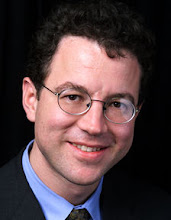Efforts to re-examine criteria and performance standards for comprehensive stroke centers (CSCs) are back in full swing. Now that the nation has seen a proliferation of primary stroke centers, capable of providing IV t-PA 24 hours a day, the next task will be for JCAHO to put teeth into the CSC concept and provide certification for centers that apply for this designation. Both JCAHO and the AHA are working behind the scenes to define both what a comprehensive stroke center is, and what the key quality measures should be.
In 2005 the first consensus statement from the AHA on the topic, entitled "Recommendations for Comprehensive Stroke Centers," made some waves (1,2). This document mapped out the basic idea of what a CSC should be. It said that vascular neurologists, neurosurgeons, and general intensivists are essential, but that neurointensivists are optional. The document said that an ICU is essential, but a dedicated neuro-ICU is optional.
On the other hand, there is a great deal of outcomes research showing that dedicated neuro-ICU's, neurointensivist involvement, and transition from an open to intensivist-driven semi-closed model are all associated with improved outcomes, more efficient resource utilization, or both (3). The evidence is compelling.
The main argument for making neuro-ICU's and neurointensivists optional in 2005 went something like this: "Yes, you guys are great, awesome, and in a perfect world every CSC would have a dedicated neuro-ICU and a team of neurointensivsts. But it's just not realistic. There are not enough of you guys. And some hospitals are never going to be able to structurally accomodate a dedicated neuro-ICU."
But the world is a different place. That was before we had 389 UNCS-certified Neurocritical Care diplomates, and more coming every year. Before we had over 1000 NCS members. Before we had Leapfrog recognition. The time has come to push forcefully for change.
There may be a bias among those who write stroke guidelines emphasizing ischemic stroke, as opposed to SAH and ICH. It may also be that some of those who write the stroke guidelines are vascular neurologists or neurosurgeons who are perfectly comfortable with the "old-school" model of working general intensivists who manage the ventilator, drips, and antibiotics, but otherwise defer completely neurological decsion-making.
The Advocacy mission of NCS is to "make the case that complex, life-threatening neurological diseases are best cared for by a multidisciplinary team with special expertise in neurocritical care." In line with that, we need to make sure that the same type of team-based integrated care that occurs in the stroke unit does not fall apart when patients are moved into an open ICU. Any new CSC guidelines need to "strongly encourage" a dedicated neuro-ICU whenever possible, involvement of neurointensivists or general intensivists who document ongoing CME training in neurocritical care, and a team-based collaborative practice model that involves protocols and order sets emphasizing best practices, shared decision making, and multidisciplinary rounds.
At the local level, think about this: is your hospital ready to become a comprehensive stroke center? What could be improved in terms of the way that ICU care is organized and delivered? If you have any thoughts on this, please respond!
